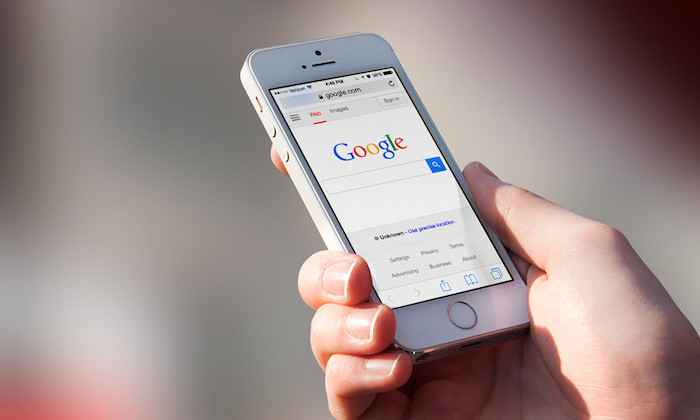Reinvent Your Online Visibility with Advanced Mobile Optimization
Reinvent Your Online Visibility with Advanced Mobile Optimization
Blog Article

The Ultimate Guide to Mobile Optimization: Strategies for Enhancing Web Site Efficiency on Smartphones and Tablets
The strategies for enhancing web site efficiency on mobile systems go beyond simple adjustment; they include a detailed strategy that entails responsive design, rate optimization, material techniques, and individual experience enhancements. By delving right into the intricacies of mobile optimization, companies can not only meet customer assumptions but additionally remain ahead in an affordable electronic landscape.
Value of Mobile Optimization
Mobile optimization plays a critical function in improving user experience and driving conversion prices in the ever-evolving digital landscape. With the increasing use smartphones and tablet computers for searching the net, making certain that sites are optimized for mobile tools has become necessary for businesses - Mobile Optimization. A mobile-optimized web site not only adjusts perfectly to various screen dimensions however additionally tons rapidly, giving individuals with a smooth and enjoyable searching experience
In today's busy world, customers expect instantaneous access to info on the move. A web site that is not maximized for mobile phones threats losing prospective customers because of reduce loading times or a bad interface. By spending in mobile optimization, businesses can deal with the demands of their mobile audience, resulting in greater involvement and enhanced conversions.
Furthermore, online search engine like Google prioritize mobile-friendly internet sites in their rankings, making mobile optimization vital for boosting exposure and drawing in natural traffic. Mobile Optimization. Overall, the significance of mobile optimization can not be overstated, as it directly affects individual contentment, conversion prices, and overall company success in the digital realm
Responsive Design Methods
Executing responsive design techniques ensures that websites dynamically readjust their format and web content based upon the individual's gadget screen dimension, giving a regular customer experience across different platforms. Among one of the most typical techniques used in receptive layout is producing fluid grids that enable content to resize proportionally to the display size. This guarantees that elements on the page preserve their relative spacing and setup, enhancing the seeing experience for users on various devices.
In addition, utilizing flexible photos that can scale with the size of the viewport aids stop images from being chopped or distorted on smaller sized screens. CSS media questions play a critical role in receptive style by allowing developers to use certain styles based on the tool characteristics such as display width, elevation, and positioning. By leveraging media queries, web sites can adapt their design and design to fit smartphones, tablet computers, and desktop Full Article screens seamlessly.
Including responsive design strategies not just enhances individual experience but likewise contributes to enhanced online search engine positions, as online search engine like Google prioritize mobile-friendly web sites in their mobile search results page. By welcoming responsive style, websites can satisfy the diverse demands of users accessing material on go to the website a selection of gadgets, ultimately driving interaction and conversions.
Speed and Efficiency Optimization

One key strategy is maximizing photos and multimedia material to decrease documents dimensions without jeopardizing quality. Pressing images, leveraging modern-day picture formats like WebP, and careless packing offscreen photos are reliable techniques to quicken tons times (Mobile Optimization). Lessening HTTP requests, leveraging internet browser caching, and minimizing server response times are vital steps in boosting performance.
Applying a material delivery network (CDN) can likewise considerably boost web site rate by distributing web content across several web servers globally, minimizing latency for customers accessing the site from various areas. Prioritizing important above-the-fold content and delaying non-essential manuscripts can further enhance regarded performance. By focusing on rate and efficiency optimization, websites can provide a smooth and enjoyable user experience on mobile phones.
Mobile-Friendly Content Approaches
Mobile-friendly material techniques include customizing the discussion of information to suit the smaller displays and on-the-go nature of smartphone and tablet computer customers. In addition, breaking up content into shorter paragraphs and using bullet points can aid boost readability and make it easier for customers to consume info swiftly.
Integrating appealing visuals, such as photos and video clips maximized for mobile viewing, can likewise enhance the general individual experience. These visuals need to matter, high-quality, and tons promptly to stop users from wearying. Moreover, integrating interactive aspects like quizzes, polls, or studies can enhance individual engagement and motivate active involvement.
Individual Experience Enhancements
Structure on the foundation of mobile-friendly web content strategies, enhancing individual experience entails optimizing every touchpoint to make sure smooth communication and complete satisfaction for mobile individuals. One essential facet of improving user experience on why not try here mobile phones is making certain fast loading times. Customers anticipate sites to load rapidly on their mobile phones and tablet computers, and any type of hold-ups can lead to irritation and increased bounce prices. Implementing responsive style is an additional key consider boosting user experience. Responsive style makes sure that websites adapt to various screen sizes and resolutions, giving a consistent and user-friendly experience across various tools.
Maximizing kinds for mobile individuals by reducing the number of fields and making use of auto-fill attributes can additionally boost the total individual experience. By focusing on these user experience improvements, internet sites can properly engage and retain mobile site visitors.
Final Thought
To conclude, mobile optimization is vital for improving site efficiency on smartphones and tablet computers. By carrying out responsive design strategies, enhancing speed and efficiency, producing mobile-friendly content, and improving user experience, organizations can efficiently reach and involve with their mobile target market. It is important for internet sites to adapt to the increasing mobile use patterns in order to continue to be competitive in the digital landscape.
Report this page